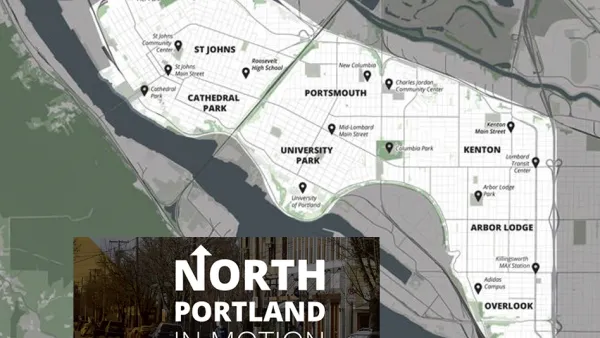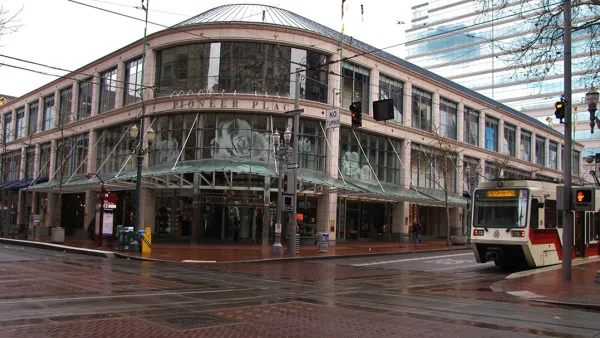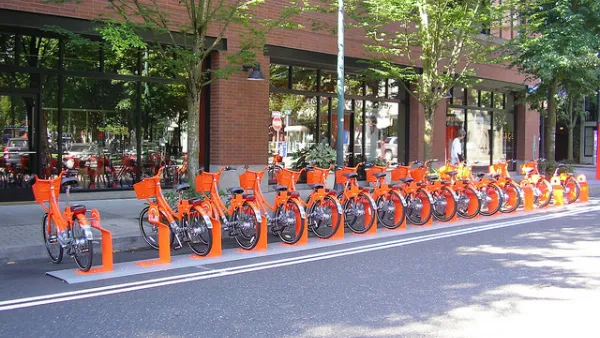Couch Court in Portland's central city is one of those rare pieces of public right of way where pedestrians and people on bikes rule.
"To improve circulation of vehicle traffic through a very fast-growing part of the central city, the Portland Bureau of Transportation decided to expand the road network," writes Jonathan Maus. "With two new lanes, people can now travel on a new road between NE 3rd Avenue and Couch Street."
Get the sense that something is amiss? Why is one of the country's leading bike advocates celebrating the opening of a new street in the downtown urban core of one of the most multi-modal cities in the country? Well, "in this case it’s fine because the new street is carfree." In fact, writes Maus, "[i]t’s the most efficient and humane way to utilize this important space adjacent to three new buildings that tower over the east end of the Burnside Bridge and have a combined 300 residential units and over 100,000 square feet of office and retail space."
Couch Court, as the new car-free street is called, is only 130 feet long, but it accommodates a 14-foot wide bikeway and two sidewalks. "As for design elements, it’s pretty straightforward," writes Maus. "I really like the angle of the mountable curbs used throughout. One thing to watch for is whether or not this becomes a popular plaza — where people on foot wander into the bikeway."
Maus includes a bunch of images to supplement his words—it's definitely worth a look.
FULL STORY: Portland’s newest and smallest street is also carfree

National Parks Layoffs Will Cause Communities to Lose Billions
Thousands of essential park workers were laid off this week, just before the busy spring break season.

Retro-silient?: America’s First “Eco-burb,” The Woodlands Turns 50
A master-planned community north of Houston offers lessons on green infrastructure and resilient design, but falls short of its founder’s lofty affordability and walkability goals.

Delivering for America Plan Will Downgrade Mail Service in at Least 49.5 Percent of Zip Codes
Republican and Democrat lawmakers criticize the plan for its disproportionate negative impact on rural communities.

Test News Post 1
This is a summary

Test News Headline 46
Test for the image on the front page.

Balancing Bombs and Butterflies: How the National Guard Protects a Rare Species
The National Guard at Fort Indiantown Gap uses GIS technology and land management strategies to balance military training with conservation efforts, ensuring the survival of the rare eastern regal fritillary butterfly.
Urban Design for Planners 1: Software Tools
This six-course series explores essential urban design concepts using open source software and equips planners with the tools they need to participate fully in the urban design process.
Planning for Universal Design
Learn the tools for implementing Universal Design in planning regulations.
EMC Planning Group, Inc.
Planetizen
Planetizen
Mpact (formerly Rail~Volution)
Great Falls Development Authority, Inc.
HUDs Office of Policy Development and Research
NYU Wagner Graduate School of Public Service





























